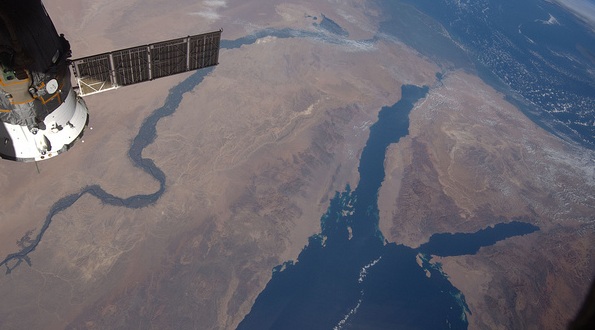BECOME A MEMBER
>JOIN
A Political Plan for a Weapons of Mass Destruction-Free Zone in the Middle East

In a new paper, HRH Prince Turki Al Faisal presents a "A Political Plan for a Weapons of Mass Destruction-Free Zone (WMDFZ) in the Middle East".
"Nuclear weapons are the only weapons ever invented that have the capacity to wholly destroy life on this planet, and the arsenals we now possess are able to do so many times over. The problem with nuclear weapons is at least equal to that of climate change in terms of gravity - and much more immediate in its potential impact. So long as any state has nuclear weapons, others will want them. So long as such weapons remain, it defies credibility that they will not one day be used - by accident, miscalculation or design. And any such use would be catastrophic."
This statement from a report by the International Commission on Nuclear Non-Proliferation and Disarmament delegitimizes nuclear weapons and is a case for their abolition, and it fits well with the advisory opinion of the International Court of Justice in 1996 which stated: "the threat or use of nuclear weapons would generally be contrary to the rules of International Law applicable in armed conflict, and in particular the principles and rules of humanitarian law." These clear and loud messages show that there is no more pressing international threat to peace and security than the proliferation of nuclear weapons and their possible use. If this serious threat is not matched by the concerted determination of the international community to eliminate it, international peace and security will remain a distant goal. Yet, while ridding the world of nuclear weapons and creating an international consensus for the immediate need to progress toward this noble goal for the sake of humanity should be at the top of the agenda for all states, realization of such a goal remains highly elusive.
There is an Arab proverb that says:
(ما لا يدرك جله لا يترك كله)
"Not realizing all of an objective doesn’t mean some of it can’t be realized."
This is certainly the case when tackling the issue of nuclear non-proliferation by the international community. For instance, establishing regional nuclear free zones was a rational necessary step toward ridding the world of this dire threat. And this is well stated in paragraph 6 of the UN General Assembly Resolution Number 3263 which calls for the creation of such a zone in the Middle East. It reads: “the establishment of nuclear-weapon-free zones, on the initiative of the States situated within each zone concerned, is one of the measures which can contribute most effectively to halting the proliferation of those instruments of mass destruction and to promoting progress towards nuclear disarmament, with the goal of total destruction of all nuclear weapons and their means of delivery”.
No region in the world is in greater need of becoming such a zone than the conflict-cursed Middle East. This region is in the midst of a drastic transformation. One of its states (Israel) is a de facto nuclear weapon state and another one (Iran) is progressing toward becoming one. Both countries have lied about their intentions in this regard. Israel publicly stated that it would not introduce nuclear weapons into the Middle East, yet it has over 200 warheads with the required delivery systems. Iran has publicly stated that it seeks the peaceful development of nuclear power, yet it continues to raise enrichment levels in its centrifuges while increasing their number and preventing IAEA inspectors from inspecting suspected sites.
Given the importance of this issue in this region and the current political changes taking place there, this paper aims to address the issue of establishing a Weapons of Mass Destruction Free Zone (WMDFZ) in the Middle East in order to realize the objective of ridding the region of weapons of mass destruction.
Introduction from Al Faisal, HRH Prince Turki. "A Political Plan for a Weapons of Mass Destruction-Free Zone (WMDFZ) in the Middle East." Paper, Belfer Center for Science and International Affairs, Harvard Kennedy School, July 9, 2013, available on the Belfer Center website.
To download the full discussion paper, please click here.
Photo by Fragile Oasis.

